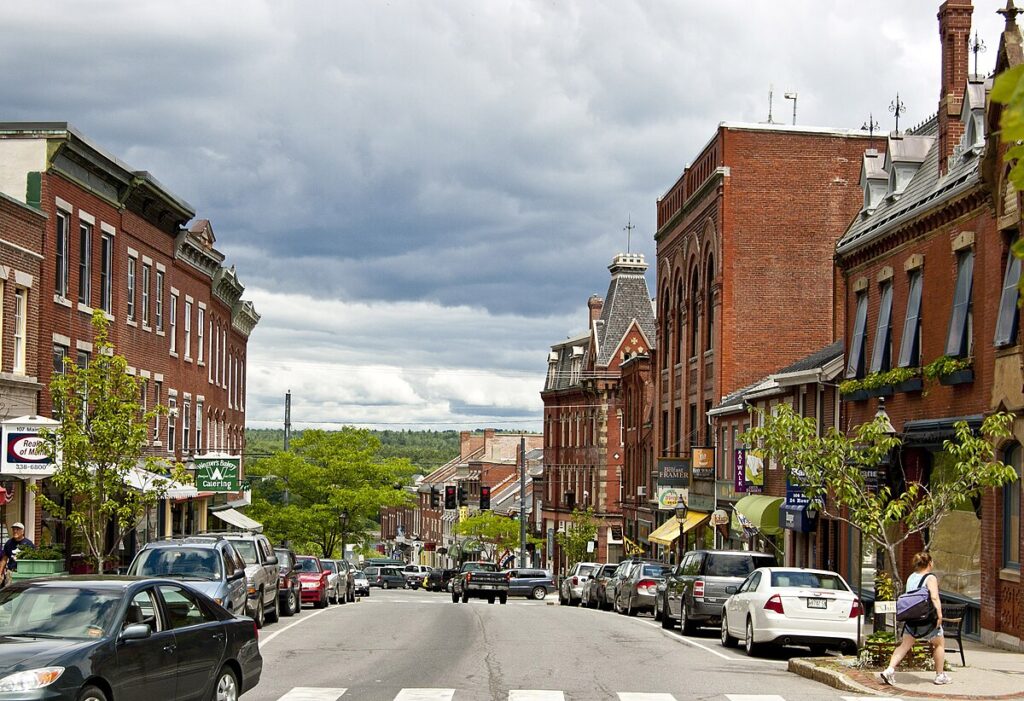
Moving to Belfast, Maine: A Comprehensive Relocation Guide
Considering moving to Belfast, Maine? This charming coastal city offers harbor beauty, arts community, and authentic Maine character. With approximately 6,900 residents in 2025, Belfast combines working waterfront with creative culture and Midcoast Maine’s most livable small city.
Demographic Profile to Consider If Moving to Belfast:
Belfast’s 2025 population is approximately 6,900 residents in this Waldo County seat on Penobscot Bay. The median age is around 48 years, with artists, retirees, back-to-the-landers, and working residents. The population is approximately 95% White, 2% Hispanic, 2% Asian, 1% Black or African American. Belfast features beautiful harbor and working waterfront, thriving downtown Main Street with galleries and shops, creative community, and serves as Midcoast Maine’s most authentic small city. The city attracts artists and creative professionals, retirees seeking coastal Maine affordability, back-to-the-land types, and those wanting authentic Maine character. Belfast appeals to those valuing arts culture, working waterfront authenticity, progressive values, and Maine coastal living without resort prices. The community emphasizes arts culture, historic preservation, working waterfront, progressive politics, and maintaining authentic character. Find trusted local services for moving, living, and working in Belfast.Belfast Relocation Directory
Cost of Living to Consider If Moving to Belfast:
Belfast offers moderate affordability for coastal Maine. Median home values range from $280,000 to $420,000 in 2025, significantly lower than Camden or Bar Harbor while providing harbor location and arts community. The median household income is approximately $52,000. Rental properties average $1,100 to $1,600 monthly. Maine has no sales tax on groceries; individual income tax is progressive 5.8%-7.15%. Property taxes are significant. Heating costs are substantial. Overall cost of living is competitive for coastal Maine, making Belfast attractive for artists, retirees, and those seeking Maine coast affordability. The city provides exceptional value for harbor location with working waterfront authenticity. Housing costs create accessibility for diverse income levels compared to resort towns.
Economy and Job Market:
Belfast’s economy includes healthcare, creative sectors, marine industries, and retail. Major employers include Waldo County General Hospital, Front Street Shipyard, Credit Union 1, arts galleries and studios, and downtown businesses. The creative economy provides opportunities for artists and craftspeople. Marine industries support the working waterfront. Tourism contributes seasonally. Typical industries include healthcare, marine services, arts/creative, retail, and hospitality. Wages reflect small-city Maine levels. Career advancement is limited though the quality of life trade-off appeals to many. The economy attracts healthcare workers, marine industry employees, artists, and those choosing lifestyle over income.
Education:
Regional School Unit 71 serves Belfast students with Belfast Area High School. School quality is adequate serving the small community. The educational infrastructure reflects small-city character with progressive educational approaches.
Recreation and Lifestyle:
Belfast offers stunning harbor views and working waterfront creating authentic coastal Maine atmosphere, thriving Main Street downtown with locally-owned galleries, shops, restaurants, and Colonial Theatre, and creative community with artists and musicians. The city features Belfast Breeze farmers market, Front Street Shipyard (yacht building), City Point Trail, and waterfront parks. Residents enjoy sailing and boating access, four-season outdoor recreation, proximity to Camden (15 minutes) and Acadia National Park (1 hour), and authentic Maine coastal lifestyle. The lifestyle emphasizes arts and creativity, harbor beauty, local food movement, progressive values, and authentic working waterfront character without resort pretension. The four-season New England climate features cold winters and pleasant summers with ocean moderation. The community fiercely values arts culture (galleries and studios abundant), working waterfront preservation, local businesses, progressive politics (Maine’s liberal coast), authenticity over tourism commercialization, and maintaining real Maine character. Living in Belfast means accepting small-city limitations, limited employment beyond healthcare and creative sectors, harsh winters, significant property taxes, choosing lifestyle over income, and Maine coast isolation while enjoying authentic working waterfront creating real Maine character, thriving arts community, beautiful harbor providing stunning views, exceptional Main Street with local character, affordable coastal Maine living compared to resort towns, and genuine community connections defining Midcoast Maine’s most authentic and livable small city where working waterfront meets arts culture and real Maine character creates the coast’s hidden gem.
Healthcare and Services:
Belfast residents access healthcare through Waldo County General Hospital providing community medical services. Regional healthcare in Bangor (45 minutes) or Portland (1.5 hours) offers additional care.
Transportation:
Belfast is accessed via U.S. Route 1, Maine State Route 3, and coastal routes. Most residents use personal vehicles. The location provides access to Camden (15 minutes south) and Bangor (45 minutes north). Typical travel times to Portland are 1.5 hours.
Conclusion:
Moving to Belfast in 2025 offers authentic coastal Maine living with harbor beauty, arts community, and working waterfront character. The city’s combination of affordable harbor location, thriving Main Street, and creative culture makes it ideal for artists, retirees, and those seeking Midcoast Maine’s most authentic destination where working waterfront meets arts community and real Maine character defines the coast’s most livable and genuine small city.

